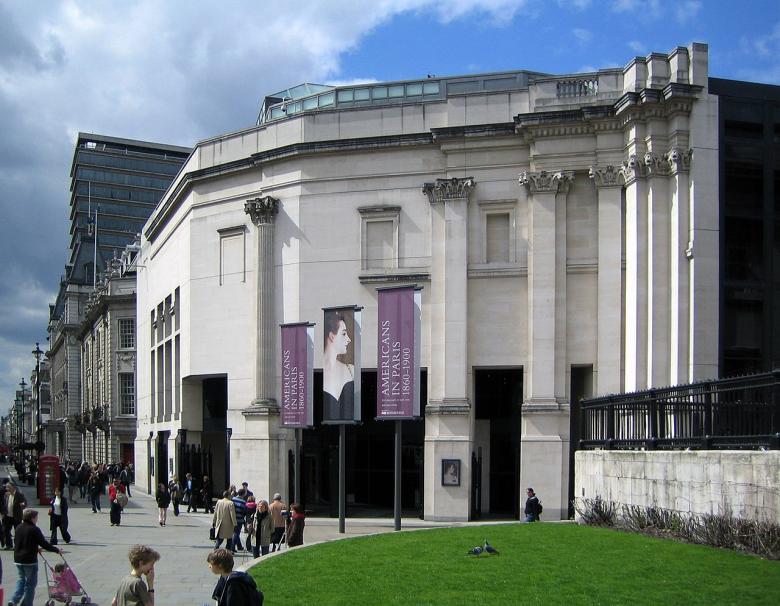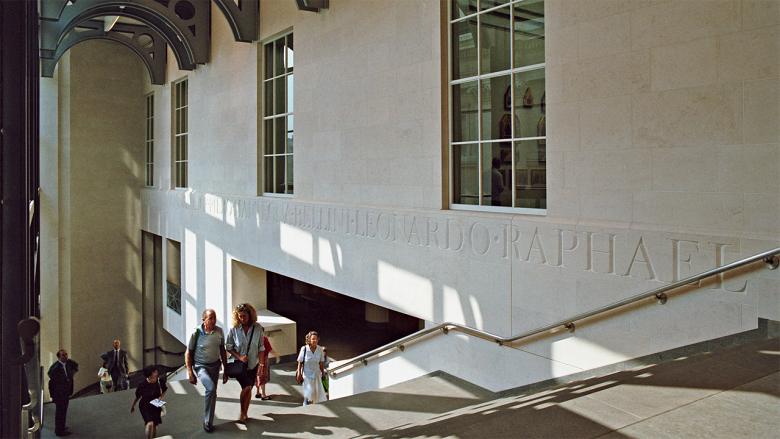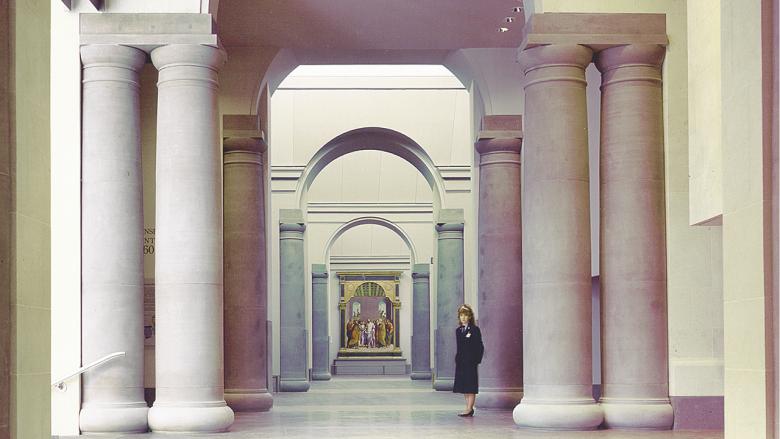25-Year Award to Sainsbury Wing
The American Institute of Architects (AIA) has announced that the Sainsbury Wing at the National Gallery in London, designed by Venturi, Scott Brown and Associates (VSBA) and completed in 1991, is the latest recipient of its Twenty-five Year Award.
Yesterday's announcement came one year after a Twenty-five Year Award jury couldn't find a worthwhile recipient and therefore failed to give an award. Many people saw the non-award as a stance against Postmodern architecture; the award "is conferred on a building that has stood the test of time for 25-35 years," per the AIA, meaning last year's contenders were completed between 1983 and 1993, when PoMo was in full swing. But a co-chair of the AIA's Twenty-five Year Award Committee said during the AIA Conference on Architecture last year that the non-award was not a backlash against Postmodern architecture. This year's award, given by a new jury* to an unmistakably Postmodern piece of architecture, reinforces that denial, though it's not known if the Sainsbury Wing was one of the finalists for last year's award.
The design by Robert Venturi and Denise Scott Brown was not the first one planned as an appendage to William Wilkins' 1838 National Gallery building on Trafalgar Square. Ahrends Burton & Koralek proposed a modern addition, but in 1984 the Prince Charles, speaking at a RIBA gala, denounced the competition-winning design as "a monstrous carbuncle on the face of a much loved and elegant friend." That now-famous sentence squashed the original design and opened the door for VSBA. The architects and client, though, had help from three brothers that were heir to the Sainsbury supermarket chain. Their pledge to cover the costs of the wing meant the office component from the competition could be removed, simplifying the program and giving the addition its name.
Outside, facing Nelson's Column in the middle of the Square, VSBA's design matches the Portland stone of the original and replicates its classical details through Corinthian pilasters that march along the undulating facade. A grand stair ascends alongside a glass curtain wall that faces the Wilkins building: a modern anomoly in the Postmodern design. At the top of the stairs the new wing links to the existing building, has galleries arranged as an enfilade of rooms, and features high natural light brought in by skylights and lanterns. The whole is appropriate to its historic London context and the historical paintings gracing its walls. Or as it is put in the AIA statement, "[V]isitors may be as unaware of the building as they are of the contentious competition that spawned it, proving that, indeed, Venturi and Scott Brown successfully designed a building that does not outshine its context."
*The 2019 Twenty-five Year Award jury:
- Jeanne Chen, Chair, Moore Ruble Yudell Architects & Planners, Santa Monica, California
- Rania Alomar, RA-DA, West Hollywood, California
- Alicia Berg, University of Chicago, Chicago, IL
- Raymond M. Bowman, Pittsburgh, PA
- Katherine K. Chia Desai Chia Architecture PC, New York, NY
- Shannon R. Christensen, CTA Architects Engineers, Billings, Montana
- Eugene C. Dunwody Jr., Dunwody/ Beeland Architects, Macon, Georgia
- Henry Moss, Bruner/Cott & Associates, Inc., Cambridge, Massachusetts
- David Rosa-Rivera, Savannah College of Art and Design, Bayamón, Puerto Rico
Artigos relacionados
-
-
-
-
Isabel Zumtobel: 'We Believe in the Power of Design to Change the Future for the Better'
World-Architects Editors | 18.11.2025 -


